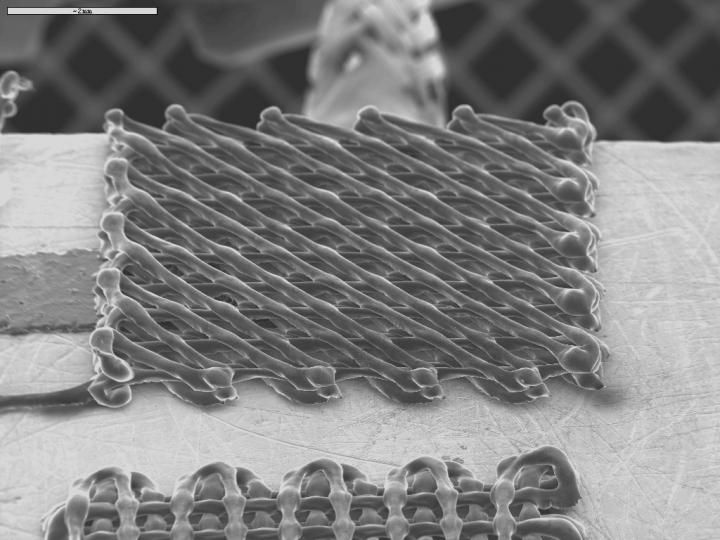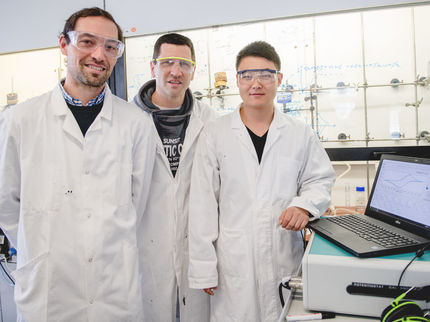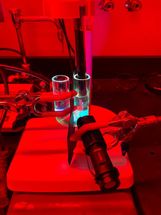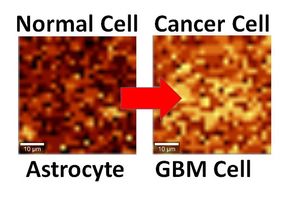Agilent Technologies demonstrates fast, accurate measurement of fuel cell gas composition
PALO ALTO, Calif., April 3, 2002 Agilent Technologies Inc. today announced that its micro gas chromatograph (micro GC) is able to demonstrate the complete and accurate analysis of fuel cell gases in less than 90 seconds.
Small startup companies and multinational oil and automotive giants are investing billions of dollars to develop and commercialize fuel cells, which offer the possibility of cleaner, more efficient electric power. To reduce costs, optimize fuel cell design and integrate components and subsystems, fuel cell developers must measure fuel gas composition throughout the process. Target compounds of interest depend on the fuel and the fuel cell technology, but are typically hydrogen, oxygen, nitrogen, carbon monoxide, carbon dioxide, hydrocarbons and sulfur species.
Agilent has shown that its micro GC can provide the needed measurements while offering excellent sensitivity, stability, linearity and speed for a wide range of analytes -- and typically at a lower price than other options. In a series of tests, the Agilent 3000 micro GC separated typical fuel cell gases in less than 90 seconds. The first channel, equipped with a molecular sieve column, resolved hydrogen (the most important analyte for fuel cells), oxygen, nitrogen, methane and carbon monoxide (perhaps the most important analyte for low-temperature fuel cells). The carrier gas was argon, for the widest range of linearity and highest sensitivity for hydrogen. A second channel, equipped with a PLOT U column, separated carbon dioxide using helium as the carrier gas. Helium affords the highest sensitivity for all analytes except hydrogen.
Argon gave the best sensitivity for hydrogen, but helium gave the best sensitivity for carbon monoxide. For applications requiring measurement of carbon monoxide down to 10 ppm, Agilent researchers turned to Agilent's new three- and four-channel version of the 3000 micro GC. One channel used a molesieve column and argon carrier gas, a second channel used a molesieve column and helium carrier gas, and a third channel used a PLOT U column and helium carrier gas.
The three channels obtained excellent precision for all analytes at all injection times. For a wide range of analyte concentrations, relative standard deviations were typically less than one percent, with the majority below 0.5 percent.
Most read news
Topics
Organizations
Other news from the department research and development
These products might interest you
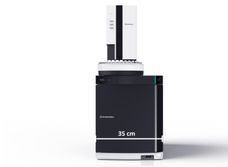
Brevis™ GC-2050 by Shimadzu
The new GC: small but powerful!
The new Brevis GC-2050 requires little space - without compromising on analytical performance

Get the chemical industry in your inbox
By submitting this form you agree that LUMITOS AG will send you the newsletter(s) selected above by email. Your data will not be passed on to third parties. Your data will be stored and processed in accordance with our data protection regulations. LUMITOS may contact you by email for the purpose of advertising or market and opinion surveys. You can revoke your consent at any time without giving reasons to LUMITOS AG, Ernst-Augustin-Str. 2, 12489 Berlin, Germany or by e-mail at revoke@lumitos.com with effect for the future. In addition, each email contains a link to unsubscribe from the corresponding newsletter.
Most read news
More news from our other portals
See the theme worlds for related content
Topic world Gas chromatography
Gas chromatography is an essential method in analytical chemistry for the separation and analysis of volatile compounds. Due to its high resolution and sensitivity, it has become firmly established in areas such as environmental analysis, food chemistry or forensic science. GC provides precise and reliable results and enables deep insights into the chemical composition of samples.

Topic world Gas chromatography
Gas chromatography is an essential method in analytical chemistry for the separation and analysis of volatile compounds. Due to its high resolution and sensitivity, it has become firmly established in areas such as environmental analysis, food chemistry or forensic science. GC provides precise and reliable results and enables deep insights into the chemical composition of samples.
Last viewed contents
BASF appoints Folker Ruchatz as head of its global custom synthesis business
Avecia Tunes in to 'pPop'TM Gene Expression System
BOC launches customer service programme to benefit users of controlled chemicals
BASF plans changes to its butanediol value chain and plasticizers business
Making cars and airplanes cheaper, safer and more efficient - DFG funds 2 major instruments to test components made of fiber-reinforced composites
Stuart_Island_(Washington)
Atomic Layer Deposition (ALD) to enable novel, high efficiency silicon nanorod solar cells

A Molecule of Light and Matter - Using light, atoms can be made to attract each other
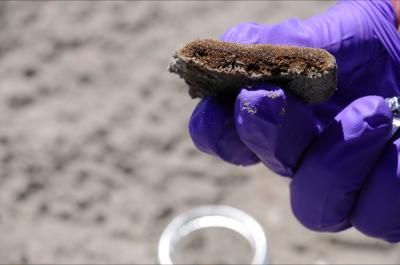
Deepwater Horizon: Identifying harmful elements of persisting oil
Carboxylic_acid
